RHS'69
The Gates to Heaven are
Now Open



The man who produced the now famous video "Missing Japan" has been released from his prison.
No, they haven't caught him for ...you know...yet. We're talking about the long drought of Tomodachi Tours to his favorite land because of covid.
The walls are down, Japan is inviting folks again and
Bobby Imoto is back in his
happy place.
Page 4
Since we never stop eating, it's breakfast again at our Kanazawa hotel. Then we leave for Hikone on our bus, traveling along the Hokuriku and Chuo Expressways. (That means more service area stops)
We’ll stop for lunch then travel to Hikone Castle.
From there, we’ll travel to Kyoto and check into the Kyoto Hotel Okura. Most of our Tomodachi group has stayed here on previous trips and our favorite shopping/eating mall, Teramachi.
Stand in line for breakfast then bus riding and walking. First the Heian Shrine Inner Garden, then off to the Philosopher’s Path followed by a visit to the Silver Pavilion in Ginkakuji.
That means it's now time for lunch followed by "Maiko, Geisha’s in training." There's a lot we could do with that name...but won't.
Finally, back to the hotel where the rest of the day is free for shopping and more eating.
High on our list is visiting the Samurai and Ninja Museum in the Teremachi Mall and maybe get to dress up as a Samurai and handle some swords. Picture opportunities!
Others have talked about going shopping of course.
Today we're checking out our second castle. Hikone Castle (彦根城) is one of only five castles listed as a National Treasure in Japan. Built between 1603 and 1622, it was a vital point in protecting the capital from attack from the east.
Today it remains one of the oldest original-construction castles in Japan.
It has moats, a hill around it and over 1,000 Yoshino cherry trees.
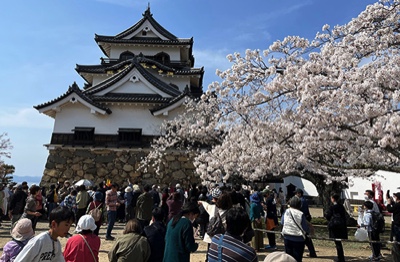
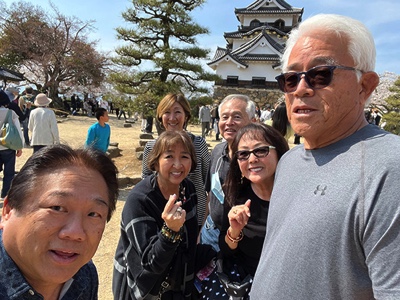
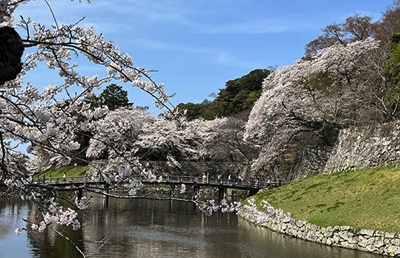
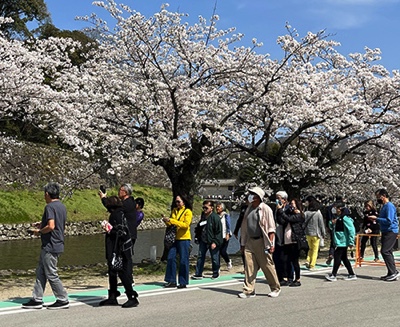
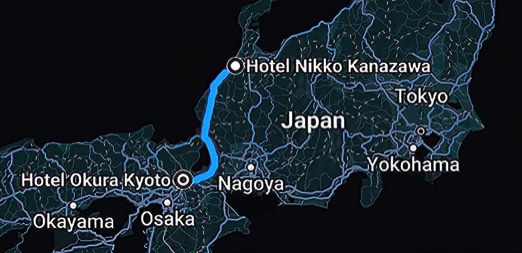
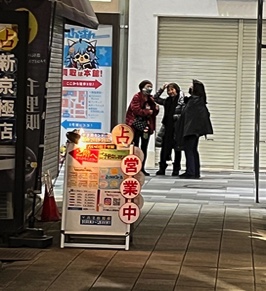
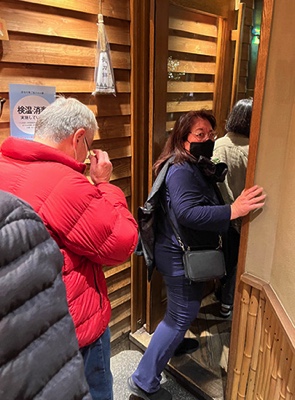
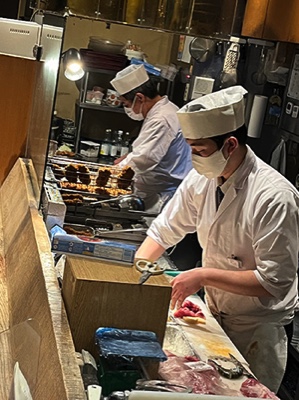
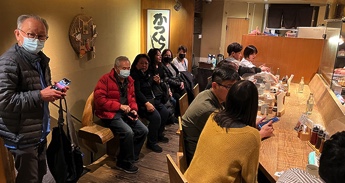
It's so hard to go out for a quiet dinner.
Here a few famous ones from RHS'69 start to gather in the dark by the restaurant. They are brought in through a side door and down some stairs past the kitchen into a small, exclusive dining area away from the general public. And they wait, as usual.
It's difficult being famous. Everywhere you go the paparazzi are waiting. They yell, "Look here", they ask personal questions, "You having a good time?"
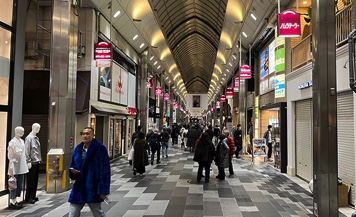
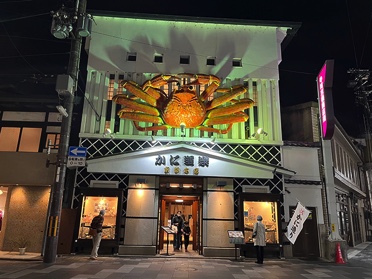
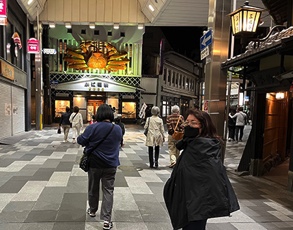
Got to get some shopping done before crashing at the hotel.
The hardest part is not losing people.
We started with a group of 6, then it was 5 and then it was go search for the lost one.
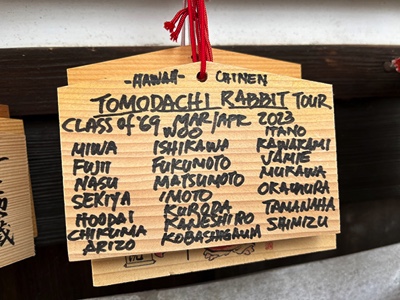
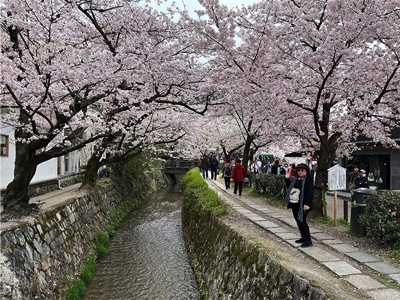
The Philosopher’s Path in Kyoto is more than a quiet walk along a canal. It’s also a chance to experience the changing seasons and explore a different side of Kyoto.
Tetsugaku no michi, as the Philosopher’s Path is called in Japanese, is especially popular when the cherry blossoms bloom in spring and when the leaves change color in fall.
The walk is also great way to see some temples and shrines with mini-detours to well-known and lesser-visited places.
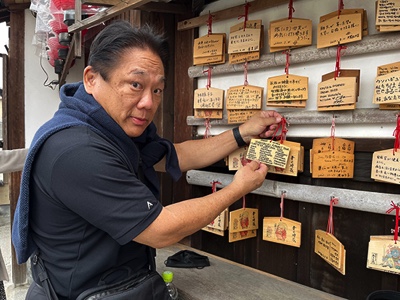
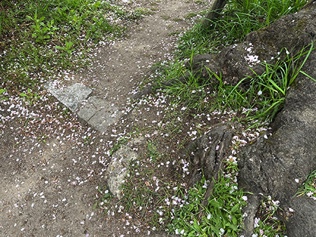
Cherry blossoms only bloom for about a week and then start falling in the wind.
Petals on the ground signify the season is coming to an end.
Visitors to the Philosopher's Path leave name plaques asking for protection and safety for themselves and others.
Bobby Imoto makes sure the members of the Tomodachi Tour are also represented.
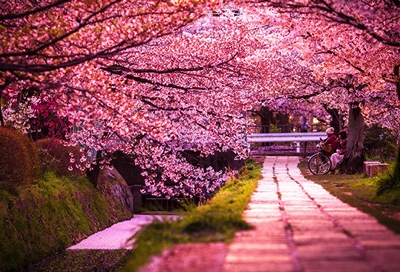
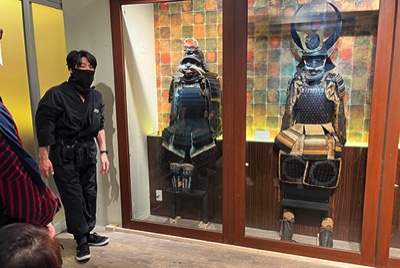
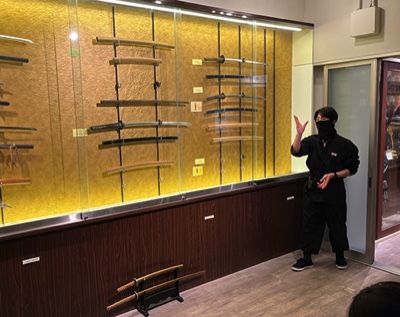
At the Samurai and Ninja Museum. Displays and education on the samurai system and history. Also some background on Ninjas and their part in Japan’s Samurai structure.
Ninja methods of waging irregular warfare were deemed dishonorable and beneath the honor of the samurai. As specially trained warriors, spies, and mercenaries, they appeared in the 15th century In feudal Japan.
We also got to throw shuriken (ninja stars) and compete in a contest. Nobody was hurt in the making of these pictures.
Thursday, April 6, 2023

A shuriken 手裏剣 means: "hidden hand blade". It's a concealed weapon that was used as a hidden dagger to distract or misdirect.
They are also known as throwing stars, or ninja stars, although they were originally designed in many different shapes.
Shuriken were supplementary weapons to the sword or various other weapons in a samurai's arsenal. They hurt.
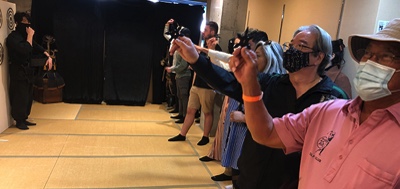
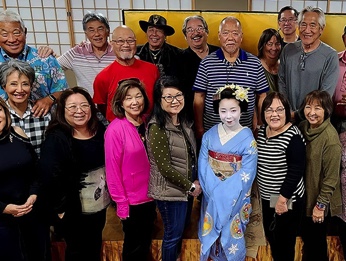
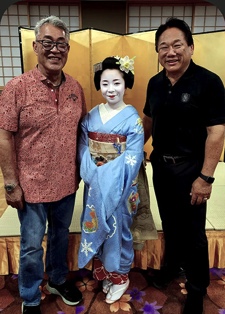
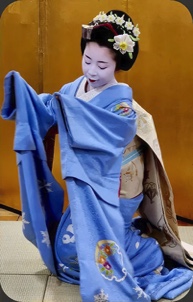
It must be time to eat, again. We wouldn't want to miss that.
We had lunch at a restaurant and was entertained by a Maiko. That's a Geisha or Geiko in the second year of her training.
A maiko is generally a woman between the ages of 15 and 20 before becoming a geiko, and is considered to be a part of culture and tradition unique to Kyoto.
A maiko is trained as an apprentice of geiko for about five years after which she may becomes a geiko.
